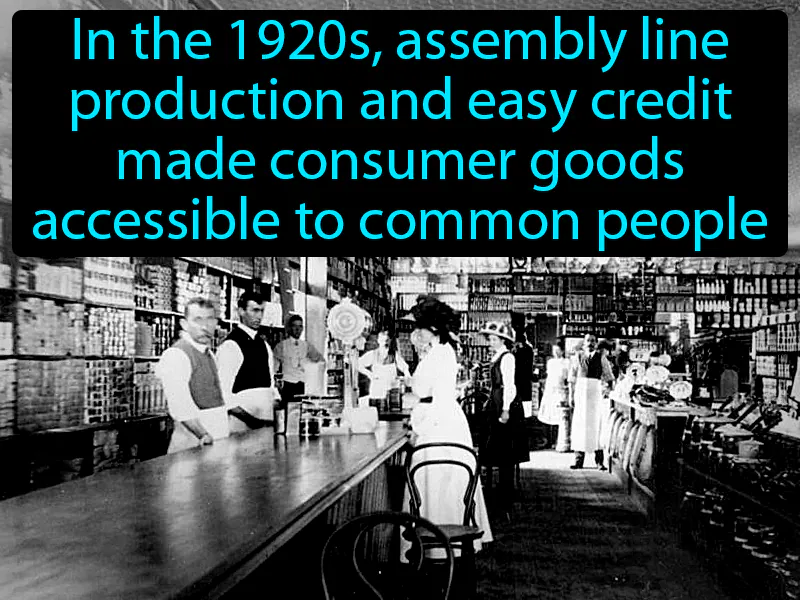Consumer Revolution
In the 1920s, assembly line production and easy credit made consumer goods accessible to common people
Real World Example
The consumer revolution of the 1920s was a key factor in the booming economy of that decade, as it allowed more people access to products like cars, radios, and household appliances. This shift highlighted tensions between traditional values and the new culture of consumerism, a concept that remains relevant today as people continue to balance spending with saving. The widespread use of credit in the 1920s set the stage for modern credit systems, impacting how people manage their finances and make large purchases now. For example, buying a car or a house often involves loans and credit checks, which trace back to the ideas popularized during the consumer revolution. Overall, this event shaped consumer habits and economic structures that influence daily life, such as how people budget and prioritize spending.

